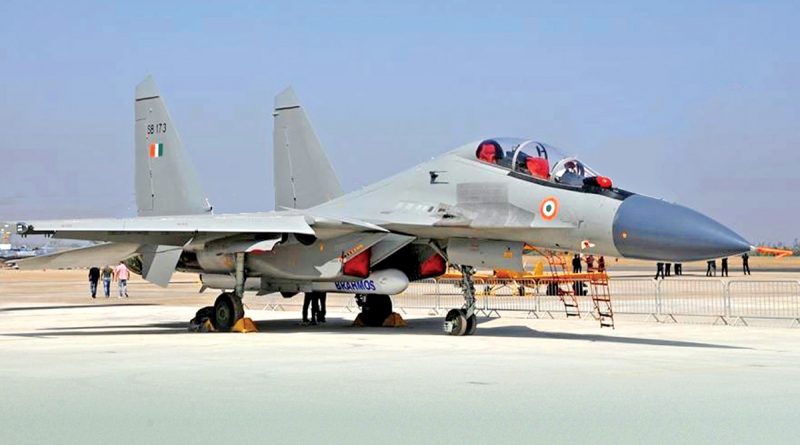India Test Fires BrahMos From IAF’s Su-30MKI
Since it is now capable of being launched from Land, Sea and Air; BrahMos completes the tactical cruise missile triad for India.
BrahMos, currently the world’s fastest supersonic cruise missile was successfully flight-tested first time from the Indian Air Force’s Su-30MKI against a sea based target in the Bay of Bengal on November 22. The missile was gravity dropped from the fuselage, and the two stage missile’s engine fired up and straightway propelled towards the intended target at the sea in Bay of Bengal.
The successful maiden test firing of BrahMos Air Launched Cruise Missile (ALCM) from Su-30MKI will significantly bolster the IAF’s air combat operations capability from stand-off ranges. This 2.5 ton missile is the heaviest weapon to be deployed on India’s Su-30 fighter aircraft which has been modified by HAL to carry weapons.
As reported by FORCE earlier, the test-firing of the supersonic BrahMos cruise missile air launch version (BrahMos-A) was disclosed by Air Chief Marshal B.S. Dhanoa on October 5 to mark the Air Force Day.
With zero accuracy error, BrahMos-A would provide excellent stand-off maritime strike capability and lethality when launched from air close to Andamans and Nicobar Islands (where India has the Andaman and Nicobar Command) to cover the Strait of Malacca, the key choke point that connects the Western Pacific with the Indian Ocean. India thus would have acquired the capability to both seek (through its P-8I aircraft) and kill hostile vessels entering what it considers its backyard where the Indian Navy is the net security provider.
Moreover, this would be just the beginning. The next step would be simultaneous work on three fronts: equipping 40 Su-30MKI with this capability; miniaturisation of BrahMos-A to BrahMos-NG (Next Generation), work on which has begun with Russia and is expected to be accomplished by 2021; and indigenisation of two key technologies – propulsion and seeker – which will have a wider application in the sub-sonic Nirbhay cruise missile which is being built by the DRDO.
The radar, seeker and propulsion technologies of BrahMos-A come from Russia. It uses a mono-pulse X-band Imaging Synthetic Aperture Radar which is better than the Terrain Contour Matching (TERCOM) radar used in cruise missiles the world over. All cruise missiles flying at sub-sonic (less than sound) speeds are designed to be terrain-hugging since they are required to evade enemy radars by flying low over large distances. Given this, they have TERCOM which continuously maps the terrain and matches it with its own stored data to reach the target. Since BrahMos is the only cruise missile with super-sonic (more than sound) speed, it travels at about 16km above sea-level. It uses this special radar which gets its updates from the GPS/Russian GLONASS and flies across many way-points (where the flight changes its path instead of the traditional trajectory which can be monitored) to evade enemy radars. Because of this peculiarity, and the super-sonic speed, BrahMos is impossible to be intercepted.
To place in the global perspective, cruise missiles are the weapon of choice rather than the ballistic missiles because they are less expensive; are easier to design, develop, procure, maintain and operate; have wider applications in conventional warfare including in unmanned aerial vehicles; and have fewer technology restriction, especially so since India is a member of the Missile Technology Control Regime since 2016.
Since it is now capable of being launched from Land, Sea and Air; BrahMos completes the tactical cruise missile triad for India.


